Global Finance takes the world’s central bank governors to school in our annual “report cards” grading their economic stewardship.

UNDERSHOOTING INFLATION AND GROWTH TARGETS
Like deer caught in the headlights, many central bankers failed to take any action on interest rates this year, despite limp economic and job growth around the world. Of the 74 central bankers in this year’s ratings by Global Finance, 35 left rates unchanged, 26 lowered rates, and 13 raised rates in the first eight months of 2016. The resistance to raising interest rates under current conditions is understandable—no one wants to dampen any nascent recovery—but it illustrates the limits of central bankers’ power.
Global Finance has been grading central bankers for 22 years. Our ratings are based on inflation control, economic growth, currency stability and interest-rate management, among other criteria. The determination of central bankers to protect their independence in the face of political pressure and their skills in supervising financial institutions are also taken into account.
Next Page: The Grades
Of note is the number of rookies in this year’s cohort: 14, compared with just seven last year. While it is too soon to grade the newcomers, we assess the remaining governors on an A to F scale. The wide range of grades shows that some central bankers are doing better than others at keeping their economies healthy in the current low-growth, low-interest-rate environment.
Undershooting inflation targets has become the global norm for central banks, Michael Hanson, senior global economist at Bank of America Merrill Lynch Global Research, noted in a recent report. Markets are skeptical that central banks will meet their inflation targets and are therefore pricing in continued below-target inflation, he says.
“We disagree [with the market]. The case for permanently low inflation is mixed at best, and policy makers still have some effective tools,” Hanson says. “Cooperation from fiscal policy would be helpful, but we view ‘helicopter money’ as both unnecessary and impractical.” “Helicopter money” refers to large amounts of new money printed and distributed to the public to stimulate economic growth. Investing in infrastructure projects that boost productivity is one way that fiscal policy could help to get world economies back on track, Hanson says. He believes central banks around the world still have the means to push inflation rates back up.
Janet Yellen, chair of the board of governors of the Federal Reserve System, says the US central bank has significantly expanded its monetary policy toolkit to address the challenges posed by the global financial crisis and the subsequent severe recession and slow recovery. In 2011, for example, the Fed began paying interest on banks’ reserve balances. “This allows the Fed to control short-term interest rates when reserves are plentiful,” Yellen said, in an address during the Kansas City Fed’s annual symposium, which took place in Jackson Hole, Wyoming, in late August.
“Two other major additions to the Fed’s toolkit were large-scale asset purchases and increasingly explicit forward guidance,” Yellen said, suggesting policymakers may wish to explore the possibility of purchasing a broader range of assets to respond to future economic downturns.
Yellen says some observers have suggested raising the Fed’s 2% inflation target or implementing monetary policy through price-level or nominal GDP targeting. Although these are important topics for research, the Fed is not actively considering them, she says.
“Even if average interest rates remain lower than in the past, I believe that monetary policy will, under most conditions, be able to respond effectively,” Yellen says.
Stanley Fischer, the Fed’s vice chair, says the US central bank has actually come close to meeting its targets of maximum employment and 2% inflation. Employment has been “remarkably resilient,” and the Fed’s preferred measure of core prices is at 1.6%, “within hailing distance of 2%,” Fischer told the Aspen Institute in Colorado in August.
The European Central Bank introduced a stimulus program in June 2014, when the inflation rate was 0.5%. It took more steps in March 2016, including the purchase of corporate bonds, but inflation for this year is forecast at a mere 0.2% in the European Union.
Meanwhile, some major oil-producing countries, including Angola, Azerbaijan and Nigeria, raised rates to prop up their currencies, as hydrocarbon revenues remained low. Others, with currencies linked to the dollar, had little room to maneuver on monetary policy.
THE “A” LIST
Country |
Central Bank Governor |
2016 Grade |
2015 Grade |
|---|---|---|---|
|
Paraguay |
Carlos Fernández Valdovinos |
A |
A |
|
Peru |
Julio Velarde Flores |
A |
A |
|
Russia |
Elvira Nabiullina |
A |
B |
|
United Kingdom |
Mark Carney |
A |
B |
|
Philippines |
Amando Tetangco Jr. |
A |
A |
|
Taiwan |
Fai-Nan Perng |
A |
A |
|
Israel |
Karnit Flug |
A |
A |
|
Lebanon |
Riad Salamé |
A |
B+ |
The Americas
Country |
Central Bank Governor |
2016 Grade |
2015 Grade |
|---|---|---|---|
|
Argentina |
Federico Sturzenegger |
B |
N/A* |
|
Bolivia |
Marcelo Zabalaga Estrada |
B+ |
B+ |
|
Brazil |
Ilan Goldfajn |
Too early to say |
N/A* |
|
Canada |
Stephen Poloz |
B- |
B- |
|
Chile |
Rodrigo Vergara |
B |
B+ |
|
Colombia |
José Darío Uribe Escobar |
B+ |
A- |
|
Costa Rica |
Olivier Castro Pérez |
B+ |
B |
|
Ecuador |
Diego Martinez |
B |
Too early to say |
|
Guatemala |
Julio Roberto Suárez |
C |
D |
|
Mexico |
Agustín Carstens |
A- |
B+ |
|
Paraguay |
Carlos Fernández Valdovinos |
A |
A |
|
Peru |
Julio Velarde Flores |
A |
A |
|
United States |
Janet Yellen |
A- |
A- |
|
Uruguay |
Mario Bergara |
B+ |
B |
|
Venezuela |
Nelson Merentes |
F |
D |
*CB governor was graded in 2015, however, a different governor held the office.
Europe
Country |
Central Bank Governor |
2016 Grade |
2015 Grade |
|---|---|---|---|
|
Belarus |
Pavel Kallaur |
C |
Too early to say |
|
Bulgaria |
Dimitar Radev |
B |
Too early to say |
|
Czech Republic |
Jiri Rusnok |
Too early to say |
N/A* |
|
Denmark |
Lars Rohde |
B+ |
B+ |
|
European Union |
Mario Draghi |
B+ |
A |
|
Hungary |
György Matolcsy |
D |
B |
|
Iceland |
Már Guðmundsson |
B |
B+ |
|
Norway |
Øystein Olsen |
B |
B+ |
|
Poland |
Adam Glapinski |
Too early to say |
N/A* |
|
Romania |
Mugur Isărescu |
B |
B |
|
Russia |
Elvira Nabiullina |
A |
B |
|
Sweden |
Stefan Ingves |
B |
B |
|
Switzerland |
Thomas Jordan |
B |
B+ |
|
Turkey |
Murat Çetinkaya |
Too early to say |
N/A* |
|
Ukraine |
Valeria Gontareva |
B+ |
C |
|
United Kingdom |
Mark Carney |
A |
B |
Asia
Country |
Central Bank Governor |
2016 Grade |
2015 Grade |
|---|---|---|---|
|
Australia |
Philip Lowe |
Too early to say |
N/A* |
|
Azerbaijan |
Elman Rustamov |
D |
C |
|
Bangladesh |
Fazle Kabir |
Too early to say |
N/A* |
|
China |
Zhou Xiaochuan |
C |
C |
|
Hong Kong |
Norman Chan |
B |
B |
|
India |
Urjit Patel |
Too early to say |
N/A* |
|
Indonesia |
Agus Martowardojo |
B |
B- |
|
Japan |
Haruhiko Kuroda |
B |
B |
|
Kazakhstan |
Daniyar Akishev |
C |
N/A* |
|
Malaysia |
Muhammad Ibrahim |
Too early to say |
N/A* |
|
New Zealand |
Graeme Wheeler |
B |
B |
|
Pakistan |
Ashraf Mahmood Wathra |
B |
B- |
|
Philippines |
Amando Tetangco Jr. |
A |
A |
|
Singapore |
Ravi Menon |
B- |
B- |
|
South Korea |
Lee Ju-Yeol |
B+ |
B |
|
Sri Lanka |
Indrajit Coomaraswamy |
Too early to say |
Too early to say** |
|
Taiwan |
Fai-Nan Perng |
A |
A |
|
Thailand |
Veerathai Santiprabhob |
C |
Too early to say |
|
Uzbekistan |
Fayzulla Mullajanov |
C |
C- |
|
Vietnam |
Le Minh Hung |
Too early to say |
N/A* |
Middle East & Africa
Country |
Central Bank Governor |
2016 Grade |
2015 Grade |
|---|---|---|---|
|
Algeria |
Mohamed Loukal |
Too early to say |
N/A* |
|
Angola |
Valter Filipe da Silva |
Too early to say |
N/A* |
|
Bahrain |
Rasheed Al-Maraj |
B- |
B- |
|
Botswana |
Linah Mohohlo |
B |
B+ |
|
Egypt |
Tarek Amer |
C |
N/A* |
|
Ethiopia |
Teklewold Atnafu |
B |
B+ |
|
Ghana |
Abdul-Nashiru Issahaku |
Too early to say |
N/A* |
|
Iraq |
Ali Mohsen Ismail |
C |
N/A* |
|
Israel |
Karnit Flug |
A |
A |
|
Jordan |
Ziad Fariz |
A- |
B+ |
|
Kenya |
Patrick Njoroge |
B+ |
Too early to say |
|
Kuwait |
Mohammad Yousef Al-Hashel |
B- |
B- |
|
Lebanon |
Riad Salamé |
A |
B+ |
|
Morocco |
Abdellatif Jouahri |
A- |
B+ |
|
Namibia |
Ipumbu Shiimi |
B |
B |
|
Nigeria |
Godwin Emefiele |
C |
C |
|
Oman |
Hamood Sangour Al Zadjali |
B |
B+ |
|
Qatar |
Abdullah Saud Al-Thani |
B |
B+ |
|
Saudi Arabia |
Ahmed Alkholifey |
Too early to say |
N/A* |
|
South Africa |
Lesetja Kganyago |
B |
B+ |
|
Tunisia |
Chedly Ayari |
B |
B- |
|
Uganda |
Emmanuel Tumusiime-Mutebile |
C |
B |
|
United Arab Emirates |
Mubarak Rashid Al Mansouri |
B+ |
B |
*CB governor was graded in 2015, however, a different governor held the office.
** Applied to a prior CB governor.
Next Page: Winners Profile
NORTH AMERICA
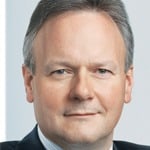
CANADA
Stephen Poloz | GRADE: B-
Canada’s commodity-linked economy continues to lag well behind that of the US. The Bank of Canada cites weak business investment, lower exports and global uncertainties as some of the reasons for slow growth. The economy actually contracted in the second quarter 2016, due in part to the massive Alberta wildfires. While the central bank lowered its overly optimistic growth outlook, it kept its benchmark rate unchanged at 0.5%. An expansive fiscal policy and a sinking currency could provide some forward momentum.
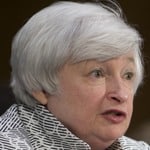
UNITED STATES
Janet Yellen | GRADE: A-
When the Federal Reserve raised its target federal funds rate for the first time in nearly a decade last December, it signaled that four additional rate hikes were likely in 2016. It is clear now, however, that the Fed got ahead of itself. To its credit, the US central bank this year took the global economy into account more than ever before and changed its position in response to incoming data and surprise developments, such as the Brexit vote and panic about China’s slowing economy. When conditions changed from what it expected last December, the Fed changed its view, as well it should have. Low inflation and modest wage growth domestically removed any urgency for the US authorities to tighten monetary policy.
LATIN AMERICA
ARGENTINA
Federico Sturzenegger | GRADE: B
Sturzenegger is reestablishing central bank credibility after the previous administration was accused of publishing false data and doing away with the institution’s autonomy for political gains. He has also supported increased use of financial-sector technology and has approved the introduction of applications for digital banking transactions using smartphones and other devices. Sturzenegger hopes the move will attract more Argentines to the banking sector, where deposits account for only 15% of GDP. The central banker is taking steps to meet the government’s goal of lowering the inflation rate to 5% by 2019.
BOLIVIA
Marcelo Zabalaga Estrada | GRADE: B+
Zabalaga’s prudent policies helped keep the economy steady amid weak natural gas prices, which account for the lion’s share of export revenues. Oil and gas prices are rebounding, with exports to Argentina and Brazil projected to rise through year-end. Moreover, GDP is expected to grow 5% in 2016, with strong financial services growth that will offset potential agricultural declines as a result of a recent drought. Zabalaga is now studying ways to stem capital flight, noting some $130 million was taken to offshore tax havens over the past year.
BRAZIL
Ilan Goldfajn | GRADE: Too Early to Say
When Goldfajn was sworn in as central bank president in June, he vowed to lower Brazil’s inflation rate to the official 4.5% target from the current rate, which is above 9%. The Israeli-born banker, who obtained a doctoral degree from MIT, was chief economist at Itaú Unibanco, Brazil’s largest private bank, and had previously held positions at both the central bank and the IMF. However, following president Dilma Rousseff’s impeachment and ouster in August, it is unclear whether Goldfajn will remain in office long enough to meet his ambitious goal.
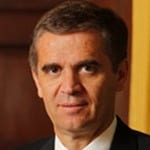
CHILE
Rodrigo Vergara | GRADE: B
Weak commodities prices, falling construction investments and rising unemployment are putting the brakes on Chile’s economic boom. Vergara has maintained a cautious policy stance that may help the country weather the slowdown. GDP posted a 0.7% decline during the second quarter of 2016, marking the first contraction since a devastating 2010 earthquake, but Vergara still predicts full-year growth could hit 1.25% to 2%. He vows to maintain a flexible monetary policy to help keep inflation near 3% in 2016–2017. The central bank kept its benchmark rate at 3.5% in August, and shifted from a tightening bias to a neutral stance.
COLOMBIA
José Darío Uribe Escobar | GRADE: B+
Uribe has resisted calls by president Juan Manuel Santos to keep interest rates unchanged, most recently hiking 25 basis points to 7.75%. reaffirming the institution’s autonomy amid an economic slowdown. The administration is concerned with escalating inflation, which was 8.97% in July. The official target range is between 2% and 4%. Inflation has been fueled by temporary supply shocks from a prolonged trucker strike and the El Niño-related drought. The central bank is expected to ease interest rates before year-end, after having done away with its forex intervention mechanism in May. Uribe is working to lower inflation and avoid a recession.
COSTA RICA
Olivier Castro Pérez | GRADE: B+
Costa Rica’s stable financial sector has sparked banking expansion, with Citi among those growing their local business. Domestic demand, which boosted credit card debt to more than 3% of GDP, is expected to fuel GDP growth of 4.2% in 2016 and 4.7% in 2017. Castro remains concerned that excess financial-sector liquidity and soaring dollar loans could pose challenges. The government is pushing an anti-tax-evasion bill that would boost public-sector revenues. Official estimates indicate sales tax and income tax evasion amounts to more than 8% of GDP.
ECUADOR
Diego Martinez | GRADE: B
Martinez faces some important challenges, as the country’s economy is expected to post its first contraction in 17 years. The central bank predicts a 1.7% GDP decline in 2016, but the IMF predicts it will be 2.3%. Much of the contraction is fueled by the impact of this year’s earthquake, weak oil prices and hefty currency devaluations among neighboring trade partners. Martinez has worked to safeguard Ecuador’s dollarization, with central bank liquidity rising by $3 billion. He believes rising deposits and loans are signaling an economic recovery ahead.
GUATEMALA
Julio Roberto Suárez Guerra | GRADE: C
Suárez was arrested last year amid fraud charges and as part of an investigation that led to the resignation of president Otto Pérez Molina. Although Suárez, who received a vote of confidence from the monetary board, remains titular head of the bank, an acting president, Sergio Recinos, was also appointed. Meanwhile, inflation remains within the official target range, and the quetzal has been strong against the dollar, aided by remittances from Guatemalans abroad. Despite the political turmoil, GDP grew 4% in 2015, according to the World Bank, with forecasters projecting 3.6%-4.1% growth in 2016. Moody’s upgraded the country’s rating outlook to stable.
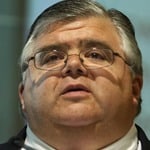
MEXICO
Agustín Carstens | GRADE: A-
With Mexico exporting 80% of its goods to the US, sluggish US GDP growth and increased political uncertainty ahead of the November presidential election are giving Carstens much to ponder. However, the central banker has contributed to keeping the economy steady through his traditional prudent policies. The bank expects GDP to grow by 1.7% to 2.5% in 2016 and 2% to 3% in 2017, as weak oil prices and slower local manufacturing output take their toll. Carstens has sounded a fiscal warning, telling the government to beware of increased public-sector debt.

PARAGUAY
Carlos Fernández Valdovinos | GRADE: A
Despite economic weakness in neighboring Argentina and Brazil, two of the country’s key trading partners, the central bank has helped keep the local economy strong. Fernández is encouraged by gradual signs of a Brazilian recovery in 2017. Paraguay’s economy grew 3% in 2015, according to the World Bank, which expects that rate to hold in 2016, while inflation remains under control. The central banker says Paraguay’s $7 billion reserves (26% of GDP) will help shield it from external shocks. Fernández is also seeking to foster greater interest in economics among the country’s youth.
PERU
Julio Velarde Flores | GRADE: A
Velarde was appointed to a third five-year term by president Pedro Pablo Kuczynski, who took office in July 2016. The central bank raised interest rates several times over the past year in a move to curb inflation. The consumer price index was eased back to the official 1%-3% target range, the lowest in Latin America, sooner than economists had expected. Velarde, nevertheless, says the bank remains vigilant. The central banker is encouraged by new copper mining projects that he expects to boost GDP growth through 2018, with 4.6% expansion in 2017.
URUGUAY
Mario Bergara | GRADE: B+
Uruguay’s role as an offshore banking center may be impacted by moves to lift banking secrecy laws, though the government says this is part of a push for greater transparency. Bergara continues to implement policies supporting banking-sector stability. Inflation, however, remains his biggest headache, as the consumer price index has hovered well above the official 4%-6% target for some time. Bergara has engaged in attempts to stem peso volatility against the dollar, including intervening in the forex market in July for the first time since 2013.
VENEZUELA
Nelson Merentes | GRADE: F
While Venezuela’s economy continues to plummet, the socialist government has doubled down on failed policies that have sparked widespread food shortages, a withering currency and the disappearance of once-thriving local industries. The central bank ceased publishing economic data in 2014, but the IMF forecasts 460% inflation for 2016 and 1,640% in 2017. It also predicts a 10% GDP contraction in 2016, following last year’s 6% decline. This is occurring in the country with the world’s largest oil reserves, and Merentes has done little to help halt the mayhem.
EUROPE
Belarus
Pavel Kallaur | Grade: C
The job of a central banker is never easy, particularly when the performance of your economy is reliant on a trading partner—in this case Russia—and the government you work for is still dominated by a Soviet-era mind-set. Such is the plight of Pavel Kallaur, the head of the National Bank of Belarus. With their fortunes inextricably linked, Belarus in 2015 saw its ruble plummet in response to the fall in the Russian ruble. Although tight budgetary and monetary policies have created some level of financial and macroeconomic stability, the IMF’s Belarus mission said in its June 30 concluding statement that more could be done in terms of deeper economic and financial reforms. The IMF mission highlighted the adoption of monetary aggregate targeting and a more flexible exchange rate in 2015 as “a major step forward.” However, the financial independence of the central bank needs to be strengthened, the IMF noted, to help boost the central bank’s credibility and to facilitate the move to an inflation-targeting regime.
Bulgaria
Dimitar Radev | Grade: B
The Bulgarian National Bank governor was appointed to his position last July. A former IMF senior economist, Radev’s appointment was designed to shore up confidence in the Bulgarian banking system following the collapse of Corpbank in 2014. In August, Radev announced that an asset quality review had concluded that Bulgaria’s banking system was stable and that no public support for banks was required. Radev remains focused on meeting the preconditions of strong banking supervision in order for Bulgaria to join the eurozone, primary among them a well-established framework for bank recovery and resolution and an independent review of its financial situation. So far, he appears to have lived up to the IMF’s expectations of a strong, independent and accountable Bulgarian central bank.
Czech Republic
Jiří Rusnok | Grade: Too early to say
Jiří Rusnok, former prime minister of the Czech Republic, was appointed governor of the Czech national bank in July of 2016. He succeeds Miroslav Singer who was consistently ranked highly by this magazine for his flexible approach to monetary policy. Having trained as an economist, Rusnok certainly has the credentials to lead the central bank. Interviews he has given to Czech media on his new role suggest that he will continue to maintain the central bank’s policy of intervention in currency markets to avoid deflation—or at least provide sufficient warning if he intends to abandon such policies.
Denmark
Lars Rohde | Grade: B+
For the past 12 months Rohde has demonstrated his willingness to intervene in currency markets and to cut deposit rates to maintain the krone’s peg to the euro, which has come under pressure in light of the European Central Bank’s bond-buying program. In recent months the Danish krone has become a safe-haven currency in response to the Swiss central bank’s decision to abandon its currency cap. Speculative money flows into the country saw Rohde defend the peg to the euro. As the former head of a major European pension fund, Rohde is also thought to have influenced the National Bank of Denmark’s move to a more holistic approach to its asset allocation as a way to better manage its reserves.
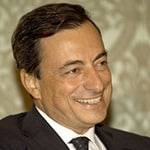
European Union
Mario Draghi | Grade: B+
Draghi’s comments that he would do whatever it takes to defend the euro may come back to haunt him. Part of those defenses have included a large-scale bond-buying program and the introduction of negative interest rates. Despite these moves, growth in the eurozone economies remains sluggish. Unlike his UK counterpart, Mark Carney, who did not hesitate to intervene in UK markets by lowering the base rate for the first time in seven years and embarking on a corporate bond-buying program, Draghi has signaled a “wait-and-see” approach to the fallout from the Brexit vote in the UK. Draghi obviously wants to see how current monetary policy measures play out before undertaking any further easing of monetary policy. In the past he has been criticized for the slowness with which he introduced quantitative easing, long after it had been implemented by other central banks in response to the 2008 global financial crisis. Does Draghi know something that everybody else doesn’t, or is he merely delaying the inevitable?
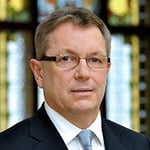
Hungary
György Matolcsy | Grade: D
Last year we credited Matolcsy’s loose monetary policy with keeping inflation in check and promoting economic growth. In an April 2016 report, the IMF noted that the central bank’s monetary policy was “appropriately accommodative.” In March the bank continued to cut the policy rate to 1.20%, but according to the IMF, medium-term growth prospects remain subdued. Recently, it is not Matolcsy’s monetary policy but his close ties with the Hungarian prime minister, Viktor Orbán, and allegations that he funneled funds to friends and family that have dominated the headlines. According to a Bloomberg report, records detail a trail of payments from the central bank to people connected to Matolcsy. The money is believed to have funded properties, artwork and books by the central bank governor. Matolcsy has denied any wrongdoing.
Iceland
Már Guđmundsson | Grade: B
Guđmundsson and Iceland’s central bank have played a key role in Iceland’s economic recovery following the 2008 global financial meltdown. After instituting a series of rate increases in 2015, the central bank’s monetary policy committee in August 2016 changed course and voted to reduce interest rates by 0.5 percentage points, to 5.25%. Inflation is expected to remain below the bank’s target until early 2017. However, Guđmundsson and the monetary policy committee remain prepared to tighten monetary policy if inflation expectations exceed the bank’s target range. Perhaps the biggest challenge that Guđmundsson and his committee face is deciding when to lift capital controls that were instituted after the 2008 crisis. Capital controls enabled the central bank more easily to defend the currency, yet in recent months the krona has gained in strength. Despite these trends, Guđmundsson does not want to risk excessive capital outflows by lifting controls too soon. His cautious approach suggests that a safe pair of hands is guiding Iceland’s economy recovery.
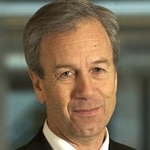
Norway
Øystein Olsen | Grade: B
Not willing to waste any time earlier this year in response to weak economic data for the Norwegian economy, Olsen and Norges Bank’s executive board lowered the key policy rate by 0.25 percentage points to 0.50%. While Olsen’s hands are tied when it comes to the impact of lower oil prices on Norway’s economic growth, he has not ruled out further decreases in the policy rate later in the year in response to key economic indicators. A stronger krone has also been factored into inflation expectations, which remain below target. In May, Olsen was appointed governor of the central bank for a second six-year term.
Poland
Adam Glapinski | Grade: Too early to say
The latter half of the tenure of Marek Belka, Glapinski’s predecessor as president of the National Bank of Poland, was overshadowed by questions regarding the bank’s independence from the government. The government is keen to do whatever it can to increase growth. Glapinski has been a member of the bank’s management board for the past six years and is seen as unlikely to make any radical departures from his predecessor’s monetary policy, with its stance of record-low interest rates. Although Glapinski reportedly has close ties with Poland’s ruling party, he has spoken out in defense of the bank’s independence.
Romania
Mugur Isărescu | Grade: B
With inflation remaining in negative territory, Isărescu and the National Bank of Romania have kept the key policy rate unchanged at 1.75% for the past few months. With annual GDP growth of 3.8% in 2015 and consumer demand expected to expand, Isărescu is most concerned with managing the impact of external geopolitical and economic factors and their impact on the Romanian economy. In a climate of what the bank describes as “heightened uncertainty,” Isărescu seems unlikely to change tack any time soon.
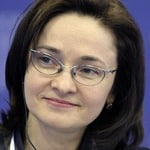
Russia
Elvira Nabiullina | Grade: A
Described as Putin’s “right-hand woman” by some segments of the media, Nabiullina is viewed as having safely steered the Russian economy through crippling economic sanctions and the impact of falling oil prices. Nabiullina has steadily reduced the bank’s benchmark interest rate. In June 2016, the key benchmark rate was cut by 50 basis points, to 10.50%. In a June report the central bank presaged the prospect of further cuts in the key rate, depending on what happens with inflation. In March annual inflation decelerated to 7.3%; it is expected to reach the bank’s target rate of 4% by next year. In a June statement Nabiullina noted that the Russian economy was performing better than expected and the ruble was strengthening.

Sweden
Stefan Ingves | Grade: B
In July the Riksbank’s executive board unanimously voted to keep the repo rate unchanged at −0.5%. It does not expect to raise it any time soon, given the uncertainty created by the Brexit vote in the UK and a slow recovery in global growth. Ingves’s expansionary monetary policy is designed to support continued improvement in the Swedish economy, combat rising inflation and give the bank the flexibility to deal with uncertainty on the global economic stage. Ingves and the Riksbank’s executive board stand prepared to deal with any upturn in the currency or inflation through interventions in the FX market and further asset purchases.
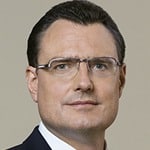
Switzerland
Thomas Jordan | Grade: B
With the Swiss franc overvalued, Jordan has maintained a monetary policy of negative interest rates and currency purchases. Jordan and the Swiss National Bank need to remain vigilant when it comes to the franc, which is viewed as a safe-haven currency. The bank has pursued unconventional means, including the purchase of riskier investments in equities, in an effort to keep the value of the franc down. Although the franc remains persistently high, Jordan stands by his monetary policies. In the wake of the Brexit vote in the UK, the National Bank voted in June 2016 to keep interest rates in negative territory.
Turkey
Murat Çetinkaya | Grade: Too early to say
Çetinkaya was appointed central bank governor this April, succeeding Erdem Başçı, who had refused to bow to political pressure to cut interest rates. The latter part of Başçı’s tenure as governor was overshadowed by questions about the central bank’s independence, with president Recep Tayyip Erdoğan pressuring Başçı to lower rates in order to combat high inflation. Markets and investors welcomed the April appointment of Çetinkaya, former deputy governor of the central bank. Çetinkaya has indicated that future monetary policy measures are dependent on what happens with inflation. Consumer inflation has increased in the past few months, but core inflation is on a downward trend.
Ukraine
Valeria Gontareva | Grade: B+
The past few months have seen Gontareva and the National Bank of Ukraine liberalize FX controls that were designed to stem capital outflows. Gontareva is also serious about cleaning up the banking sector; the bank now publishes information regularly on enforcement actions against banks. Gontareva and the National Bank’s board have cut the key policy rate in response to an improved outlook for both inflation and a more stable foreign exchange. In May headline inflation fell 7.5% year-on-year. A recovery in economic activity is uppermost in Gontareva’s mind, as she continues to ease monetary policy.
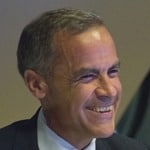
United Kingdom
Mark Carney | Grade: A
Following June’s Brexit vote, Carney did not waste any time in trying to allay market concerns: He cut the base rate for the first time in seven years to its lowest-ever level, 0.25%. Some critics believe he acted too soon—that his actions were political. But Carney’s was the only reassuring voice at a time of great political and economic uncertainty. Prime minister David Cameron had stood down in the wake of the Brexit vote, and the Leave camp had showed no clear signs of the way forward for a post-Brexit Britain. Carney did what would be expected of any central banker, acting quickly to try to restore confidence to investors and providing additional liquidity to minimize the prospect of recessionary forces. Only time will tell whether he jumped the gun.
ASIA
AUSTRALIA
Philip Lowe | GRADE: Too early to say
The Reserve Bank of Australia (RBA) lowered its cash rate by a quarter point, to a record low of 1.5% in August, following a similar cut in May 2016. The RBA said it expected low inflation to continue for some time together with very subdued growth in the cost of labor. Low rates supported demand, while the weak exchange rate helped exports as the economy attempted to rebalance, following an end to the investment boom in the mining sector. Deputy governor Philip Lowe replaced Glenn Stevens as governor of the central bank in September 2016, continuing the RBA’s tradition of promoting from within. His recent hiring makes his tenure too early to grade.
AZERBAIJAN
Elman Rustamov | GRADE: D
According to Elman Rustamov, chairman of Azerbaijan’s central bank since 1995, the main task of the institution is to keep the country’s currency, the manat, from fluctuating too widely. In February 2015, the central bank abandoned the peg between the manat and the dollar in favor of targeting a basket of dollars and euros. As the manat tumbled, the bank burned through $8 billion of its reserves in an attempt to support it in 2015. This year they changed tacks and raised the refinancing rate from 3% to 9.5% to prop up the currency, which continued to weaken as the country’s crucial oil and gas income remained low.
BANGLADESH
Fazle Kabir | GRADE: Too early to say
Former Finance secretary Fazle Kabir was named governor of the central bank in March, after Atiur Rahman resigned from the position following the theft by computer hackers of $81 million from the Bangladesh Bank’s reserve account at the Federal Reserve Bank of New York in early February 2016. The case, which raised concerns about the safety of cross-border transactions, is still under investigation. Meanwhile, the Bangladesh Bank kept its key interest rate unchanged at 6.75% as inflation remained below 6%.
CHINA
Zhou Xiaochuan | GRADE: C
Zhou Xiaochuan has been governor of the People’s Bank of China (PBOC) since 2002; he is the longest-serving central bank chief in the Group of 20 major economies. The PBOC kept its benchmark one-year lending rate unchanged at 4.35% this year, after cutting it by a quarter point in October 2015. Zhou says the bank’s multiple objectives make it susceptible to political pressures. Under Zhou’s leadership, the central bank has been accused of creating excessive credit growth, high leverage and shadow banking. In a lecture at the International Monetary Fund in June, Zhou said the PBOC has to work harder than other central banks as China’s economy transitions to a market-based system.
HONG KONG
Norman Chan | GRADE: B
Hong Kong’s economy is slowing, and many economists fear that the Brexit vote could tip it into recession because of its large trade and financial links to the UK. If the dollar remains strong, Hong Kong’s tourism and retail sales could be hurt. Nonetheless, the main objective of Hong Kong’s monetary policy is currency stability, defined as keeping the currency close to 7.8 to the US dollar. Hong Kong has adequate foreign exchange reserves to defend the dollar peg for as long as it desires.
INDIA
Urjit Patel | GRADE: Too early to say
Urjit Patel, former deputy governor at the Reserve Bank of India, replaced Raghuram Rajan as head of the central bank last month. With a doctorate in economics from Yale and experience at the International Monetary Fund, Patel is expected to bring some continuity in monetary policy. Interest rate decisions in the future will be made by a committee, which will meet four times a year and will target inflation. Rajan received an “A” grade in last year’s Global Finance Central Banker Report Cards.
INDONESIA
Agus Martowardojo | GRADE: B
Bank Indonesia cut its reference rate in June for the fourth time this year, to 6.5%, in an effort to stimulate economic growth. Real GDP growth accelerated to above 5% in the second quarter, and the central bank said it expects robust growth to endure. The government is continuing to spend heavily on infrastructure projects, and household consumption is picking up as well. Bank Indonesia aims to maintain a stable rupiah through the use of inflation targeting.
JAPAN
Haruhiko Kuroda | GRADE: B
The Bank of Japan says it still has room to ease policy further, despite the fact that interest rates have already turned negative and commercial banks are running out of government bonds to feed the central bank’s buying program. Meanwhile, questions about the US Federal Reserve’s appetite to raise rates have boosted the yen, which in turn has depressed exports and complicated Japan’s seemingly endless fight against deflation. The BOJ’s record bond buying has drained liquidity from that market. The central bank has now stepped up its purchases of stock funds.
KAZAKHSTAN
Daniyar Akishev | GRADE: C
The National Bank of Kazakhstan cut its base rate by two percentage points in July, to 13%, reflecting confidence that inflation would decline to the upper band of its 6%-to-8% target range by the end of 2016. Back in February the central bank raised the base rate to 17% amid volatile financial markets and a weakening currency. In May the bank was able to trim its base rate to 15%, saying that inflationary expectations were declining and the tenge currency was stabilizing. The central bank floated the tenge in 2015 as part of a shift to inflation targeting.
MALAYSIA
Muhammad Ibrahim | GRADE: Too early to say
Zeti Akhtar Aziz, Malaysia’s long-serving, Grade “A”–rated central bank governor, stepped down at the end of April and was succeeded by her deputy, Muhammad Ibrahim. Zeti oversaw a steady and predictable monetary policy, while guarding the central bank’s independence and helping to turn Malaysia into an important hub for Islamic finance. Muhammad has taken the helm at Bank Negara in the wake of a crisis—the discovery of alleged financial irregularities at state fund 1Malaysia Development.
NEW ZEALAND
Graeme Wheeler | GRADE: B
The Reserve Bank of New Zealand cut the official cash rate by a quarter point, to 2%, in August, its second reduction in 2016. The RBNZ said low dairy prices were hurting farmers’ incomes. It also said that downside risks to inflation were emerging as a result of the strong New Zealand dollar. The rate cut came a week after Australia’s central bank lowered its cash rate to 1.5%. The RBNZ also said it would tighten loan-to-value restrictions to curb a rise in housing prices in the country.
PAKISTAN
Ashraf Mahmood Wathra | GRADE: B
Pakistan’s central bank cut its key policy rate by a quarter point, to 5.75%, in May. It said that real GDP growth this year would miss the 5.5% target but was still likely to be stronger than last year’s 4.2% growth. The bank said expanding services and industrial activity would offset weakness in the agricultural sector. It added that foreign exchange reserves are continuing to increase and that the economy is benefiting from low oil prices, since it is a net importer of petroleum.
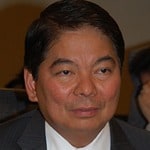
PHILIPPINES
Amando Tetangco Jr. | GRADE: A
The Philippines is one of the fastest-growing economies in Asia, thanks in no small part to the sound monetary policies of its central bank, which has been headed by Amando Tetangco since 2005. Real GDP grew at a 7% annual rate in the second quarter of 2016, aided by campaign spending ahead of the May 9 presidential vote won by Rodrigo Duterte, who has pledged to fight crime and corruption. Inflows of remittances and foreign investment have also helped sustain economic growth in recent years. The central bank adopted an interest-rate-corridor system in June to help develop a more active money market, and lowered the overnight reverse repurchase rate a full point, to 3%. Tetangco is set to end his second term in 2017.
SINGAPORE
Ravi Menon | GRADE: B-
The Monetary Authority of Singapore, the de facto central bank, uses the currency exchange rate as its main monetary policy tool. The Singapore dollar is pegged to a basket of currencies of the country’s main trading partners. The MAS moved to a neutral policy in April, saying it would not seek currency appreciation. Pressure is building for the MAS to ease that policy, as Singapore’s open, export-dependent economy is susceptible to fallout from Brexit and a potential slowdown in the global economy. Furthermore, low oil prices have hit the marine and offshore services industry hard.
SOUTH KOREA
Lee Ju-yeol | GRADE: B+
The Bank of Korea cut its base rate by a quarter point in June, to a record low of 1.25%, in a preemptive move to support the economy while inflation remained well below the target. Exports, which account for half of South Korea’s economy, are slowing down; domestic demand is increasingly weak, and the shipbuilding industry is cutting jobs. To combat these trends, the International Monetary Fund in August urged the government to implement fiscal stimulus, accompanied by additional monetary policy easing. It forecasts GDP growth of 2.7% this year and 3% in 2017.
SRI LANKA
Indrajit Coomaraswamy | GRADE: Too early to say
Debt-laden Sri Lanka finalized an agreement in June for a three-year, $1.5 billion loan from the IMF. As part of the government’s strategy to address short-term imbalances, the central bank will seek to keep inflation low, while at the same time shifting to a more flexible exchange rate regime. Economist Indrajit Coomaraswamy was named central bank governor in July, replacing Arjuna Mahendran, whose tenure ended on June 30. Mahendran said he would not seek an extension of his term until he was cleared of allegations of nepotism and the misuse of public funds.
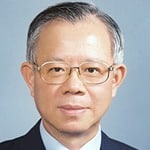
TAIWAN
Fai-Nan Perng | GRADE: A
Taiwan’s central bank lowered its benchmark discount rate by an eighth of a point on June 30 to 1.375%. It was the fourth straight cut and brought the rate to its lowest level since 2010, as GDP growth has slowed. Taiwan’s economy depends heavily on exports, especially to China. Exports increased in July for the first time in 18 months. The central bank’s careful and prudent monetary policy has resulted in low and stable inflation. The US Treasury criticized the bank in April 2016, however, for its heavy intervention in the foreign exchange market, which has since been scaled back.
THAILAND
Veerathai Santiprabhob | GRADE: C
Thai voters approved a new military-backed constitution in August, removing some uncertainty for investors. Economic growth has also rebounded, thanks to high government spending. Although exports remain weak, GDP growth is expected to surpass 3% in 2016. The central bank has kept its one-day repurchase rate unchanged so far this year, saying that it was adequate to support the economic recovery. A rise in tourist arrivals could give the government some time to come up with a plan for more sustained economic growth.
UZBEKISTAN
Fayzulla Mullajanov | GRADE: C
Uzbekistan’s central bank kept its refinancing rate unchanged at 9%, as the country’s command economy expanded at a 7.8% rate in the first half of 2016. A booming construction sector kept the economy growing and enabled it—despite weaker oil prices—to retain its ground, for the most part, from last year’s high 8% growth rate. The government in July reaffirmed its commitment to lower the state’s presence in the economy and to introduce a privatization program. Despite this news, corruption remains a major obstacle to a free market economy in this former Soviet republic.
VIETNAM
Lê Minh Hung | GRADE: Too early to say
A severe drought could keep Vietnam from reaching its 6.7% GDP growth target in 2016, but the economy continues to benefit from strong exports. The government says it will take steps to stimulate domestic demand, tourism and industries that provide inputs to the manufacturing sector. The State Bank of Vietnam has kept its refinancing rate unchanged at 6.5% so far this year. However, rising food prices are pushing up inflation, which has been low in recent years.
Middle East & Africa
ALGERIA
Mohamed Loukal | GRADE: Too early to say
Mohamed Loukal, former head of Banque Extérieure d’Algerie, one of the country’s largest state-run banks, became governor of the central bank in June. President Abdelaziz Bouteflika fired Mohammed Laksaci, the long-serving central bank chief, for allegedly mishandling the fallout from the decline in oil prices. As Algeria’s energy revenues fell, the dinar tumbled to record lows and the country began running a trade deficit. The government has imposed import restrictions and plans to cut spending by 9% this year.
ANGOLA
Valter Filipe da Silva | GRADE: Too early to say
Angola named Valter Filipe da Silva as central bank governor in March. He came to the post after José Pedro de Morais resigned as governor after serving for only 14 months. Africa’s second-largest oil exporter after Nigeria, Angola has been hit hard by the decline in energy prices. The central bank raised its lending rate by two percentage points in June to a record 16%. This was the third increase of this year, totaling five percentage points. The country also called off loan talks with the IMF.
BAHRAIN
Rasheed al-Maraj | GRADE: B-
With its strong financial sector, Bahrain’s economy is fairly well diversified, but low oil prices and continued social and political unrest are weighing on growth and widening the fiscal deficit. The country needs oil priced at $120 a barrel to balance its budget. The central bank has kept its one-week deposit rate unchanged at 0.75% this year, after raising it from 0.5% last December, following the Federal Reserve’s rate hike. Economists say GDP growth could pick up a bit next year with the help of grants from the Gulf Cooperation Council.
BOTSWANA
Linah Mohohlo | GRADE: B
The Bank of Botswana lowered its base rate a half point, to 5.5%, in August in an effort to support economic activity. GDP growth contracted slightly last year, pulled down by the mining industry. The bank says its policy is aimed at keeping inflation in the 3%-to-6% range in the medium term, and it is currently at the low end of that range. The Bank of Botswana says credit growth is continuing at a sustainable level and is posing no threat to financial stability.
EGYPT
Tarek Amer | GRADE: C
The Central Bank of Egypt caused a stir in March by setting a nine-year term limit for all CEOs of public and private banks, as well as for the heads of foreign banks operating in Egypt, in order to “to inject new blood.” However, an Egyptian court suspended implementation of that decree, which would have forced at least eight bank CEOs to resign. Meanwhile, soaring inflation and higher interest rates have dampened domestic demand. Restrictions on access to foreign exchange also disrupted economic activity. Despite these issues, Egypt reached a tentative agreement with the IMF in August for a three-year, $12 billion loan.
ETHIOPIA
Teklewold Atnafu | GRADE: B
Ethiopia was one of the world’s fastest-growing economies in 2015, but real GDP growth has slowed dramatically this year as a result of the worst drought in 30 years, owing to El Nino. However, the IMF says an economic recovery is likely in 2017, with growth returning to about 7%. The National Bank of Ethiopia has kept its benchmark interest rate unchanged at 5% this year, while inflation has trended lower.
GHANA
Abdul-Nashiru Issahaku | GRADE: Too early to say
Dr. Abdul-Nashiru Issahaku was named governor of Bank of Ghana in April, following a decision by Henry Kofi Wampah—who raised the policy rate four times in 2015, to 26%—to take early retirement four months before the end of his term. Issahaku, former second deputy governor of the central bank, has previously worked at the African Development Bank. He said the Bank of Ghana would end financing of government debt, as required by the IMF under an extended credit facility. So far this year he has held the central bank’s interest rate at 26%, as inflation ticked above 17%.
IRAQ
Ali Mohsen Ismail | GRADE: C
The IMF approved a three-year, $5.34 billion loan to Iraq in July to support the government’s economic reform program. Low oil prices and high military spending to combat ISIS have created a financing gap of about $18 billion. The IMF wants Iraq to maintain its exchange rate peg and to gradually remove the remaining currency restrictions. The Central Bank of Iraq has held its policy rate unchanged at 6% so far this year. The oil sector grew by 13% in 2015 and is growing at about a 20% rate this year, but the non-oil economy contracted by 19% last year and continues to shrink.
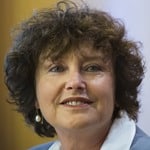
ISRAEL
Karnit Flug | GRADE: A
The Israeli economy continues to exhibit moderate growth of about 2.5%, along with low inflation. Government spending and low oil prices are supporting domestic demand, although exports have been weak. The Bank of Israel has kept its benchmark interest rate unchanged at a record-low 0.1% this year. The central bank has paired its expansionary monetary policy with foreign exchange intervention to slow the rise in the value of the shekel. It also introduced a series of stabilizing measures to slow the rapid rise in housing prices. Governor Karnit Flug says the long-term structural problems facing the economy, such as low productivity growth, are not susceptible to monetary policy tools.
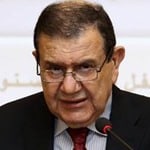
JORDAN
Ziad Fariz | GRADE: A-
Jordan’s economy has continued to grow at a moderate pace, despite the spillover effects of fighting taking place in Syria and Iraq. This is a remarkable accomplishment in light of the fact that the country lacks natural resources and is hosting 1.2 million Syrian refugees. The international community is providing a $2.1 billion aid package to create jobs for Syrians, and the EU agreed to waive taxes and quotas for products created by Syrians. The World Bank approved a six-year, $1.4 billion loan in July. Meanwhile, the central bank’s monetary policy is geared toward sustaining the exchange rate peg to the dollar to maintain price stability and attract foreign investment.
KENYA
Patrick Njoroge | GRADE: B+
Kenya’s central bank cut its benchmark interest rate by a full percentage point, to 10.5%, in May on account of falling inflation, even as economic growth remained strong and the shilling held stable. Real GDP growth of around 6% is expected this year, thanks to increased spending on infrastructure and an accommodative monetary policy. However, commercial banks could see lending margins tighten significantly under a new law that imposes limits on deposit and lending rates. Central bank governor Patrick Njoroge says the rate cap could discourage bank lending.
KUWAIT
Mohammad Yousef Al-Hashel | GRADE: B-
The Central Bank of Kuwait has kept its discount rate unchanged at 2.25% thus far this year, after raising it by a quarter point last December in line with a similar move by the US Federal Reserve. Kuwait’s real GDP grew by 1.8% last year, as the government boosted investment spending. However, the important oil sector shrank for the third year in a row. The country’s publicly listed companies sustained a decline in earnings in the first half of 2016, with particular weakness seen in the real estate sector.
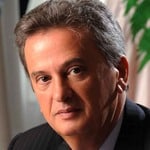
LEBANON
Riad Salamé | GRADE: A
Lebanon’s central bank has maintained the financial stability of the country, which has not had a president in more than two years and which has been flooded with refugees from the war in Syria. The central bank is also acting on behalf of the US to implement sanctions against supporters of Hezbollah, an Islamist militant group. Lebanese banks are being forced to close Hezbollah-linked accounts. The central bank has held the benchmark repo rate unchanged at 10% and has kept the Lebanese pound steady. It has also continued to appoint banks to manage eurobond issues to finance public debt.
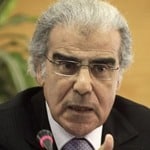
MOROCCO
Abdellatif Jouahri | GRADE: A-
Morocco’s central bank, Bank Al-Maghrib, cut its official interest rate by a quarter point in March, to 2.25%, in an attempt to stimulate the economy. The cut was the first since December 2014. The central bank also raised reserve requirements to 5% from 3% but said it would start paying interest on required reserves. The IMF in July approved a $3.5 billion precautionary liquidity line for Morocco, after lowering it from an initial $5 billion. The agency said Morocco has reduced its fiscal and external vulnerabilities and no longer needs as much insurance against external shocks.
NAMIBIA
Ipumbu Shiimi | GRADE: B
The Bank of Namibia raised its benchmark repo rate a quarter point in both February and April of 2016, bringing it up to 7%. It said the increases were designed to align interest rates with those of its neighbor South Africa, to avoid possible capital outflows and to encourage savings. The Namibian dollar is linked to the South African rand. Namibia’s GDP growth is expected to slow slightly, to 4.4% this year, reflecting a slowdown in the mining of diamonds and zinc concentrate. Agricultural output has been hit by a drought.
NIGERIA
Godwin Emefiele | GRADE: C
The Nigerian central bank floated the naira in June, following a year of strict currency controls aimed at keeping foreign currency from fleeing the country. While the naira promptly plummeted, economists said the move was long overdue and could end a dollar liquidity shortage that has damaged the economy and disrupted trade. The positive effects will be diluted, however, by the central bank’s decision in August to suspend nine Nigerian banks from foreign currency trading for allegedly withholding $2.1 billion belonging to the state oil company.
OMAN
Hamood Sangour Al Zadjali | GRADE: B
The Central Bank of Oman pegs the rial to the dollar and has kept its benchmark interest rate at a record-low 1% since March 2012. The country’s heavy economic reliance on oil and gas means it is subject to moderate risks, according to Moody’s Investors Service. Oman is sustaining a steeper financial decline than its peers in the Gulf Cooperation Council, Moody’s also noted. A widening budget deficit is putting pressure on the government to cut spending, even as it is pursuing a program of economic diversification.
QATAR
Abdullah Saud Al-Thani | GRADE: B
Qatar’s central bank held its repo rate unchanged at 4.5% this year and focused more specifically on facilitating the flow of credit to productive sectors of the economy. Banks in Qatar remained well capitalized despite a decline in public-sector deposits. GDP growth slowed to 3.7% in 2015 and is expected to slow further this year, as fiscal and exterior positions have deteriorated. The government expects to run a budget deficit for at least three years and will be unable to cut spending much as it invests in infrastructure to prepare for hosting the FIFA World Cup in 2022.
SAUDI ARABIA
Ahmed Alkholifey | GRADE: Too early to say
Saudi Arabia named Ahmed Alkholifey as central bank governor in May, replacing Fahad Al-Mubarak as part of a reorganization of government ministries. Alkholifey previously was deputy governor for research and international affairs at the central bank, the Saudi Arabian Monetary Agency. SAMA has left its benchmark repo rate unchanged at 2% this year. However, the Saudi Interbank Offered Rate (Saibor) has risen from 0.8% to about 2.3% as the banking sector has felt a liquidity squeeze, and GDP is contracting as a result of fiscal austerity. Yet the government is well able to finance its debt.
SOUTH AFRICA
Lesetja Kganyago | GRADE: B
The South African Reserve Bank is in the unenviable position of needing to boost the economy at the same time that inflation is rising above its 6% ceiling. The central bank raised its repo rate twice this year, bringing it from 6.25% up to 7%. Local elections in August saw the ruling African National Congress party lose its long-held majority in the National Assembly. The mining-based economy has stalled because of weak demand for the country’s resources. The central bank says it doesn’t expect the economy to grow at all in 2016.
TUNISIA
Chedly Ayari | GRADE: B
Tunisia’s central bank has kept its benchmark interest rate on hold at 4.25% this year. The bank cut it by a half point in October 2015 in an attempt to boost economic growth at a time when inflation was slowing. The IMF approved a four-year, $2.9 billion loan in June 2016 to support economic reforms aimed at tackling high unemployment and promoting private-sector development. Terrorist attacks in 2015 have hit the country’s tourism industry hard, traditionally the country’s main source of foreign exchange.
UGANDA
Emmanuel Tumusiime-Mutebile | GRADE: C
The Bank of Uganda lowered the central bank rate by a full percentage point to 14% in August, citing the stability of the exchange rate and a gradual dampening of inflationary pressures this year. It was the third interest rate cut in 2016, totaling three percentage points. However, weak demand for the country’s largely agricultural exports, as well as drought and insufficient infrastructure are weighing on the economy. Lower interest rates and increased public spending are expected to support growth, according to the central bank.
UNITED ARAB EMIRATES
Mubarak Rashed Al Mansouri | GRADE: B+
The United Arab Emirates central bank raised its overnight repurchase rate by a quarter point in December 2015, on the heels of the US Federal Reserve’s rate hike. There have been no changes in the rate thus far in 2016. Executive directors of the IMF praised the UAE in July for its resilience to the oil price shock. In light of the country’s ample financial buffers, the UAE has been able to adjust gradually to persistently low oil prices, they said. The directors said the continuing revision of banking laws should enhance the central bank’s independence.



